An ‘After Christmas Present’ – Hornby Duke of Gloucester
Many thanks to that well known retailer in Sheffield who contacted me on Friday for payment and then delivered the locomotive on Saturday.

Hornby R3191 - Duke of Gloucester
What do I think of the model? Well it is ‘growing on me’.
Straight out of the box there were a number of issues. Most obviously ‘something’ had come adrift in transit and the engine was no longer coupled to the tender.
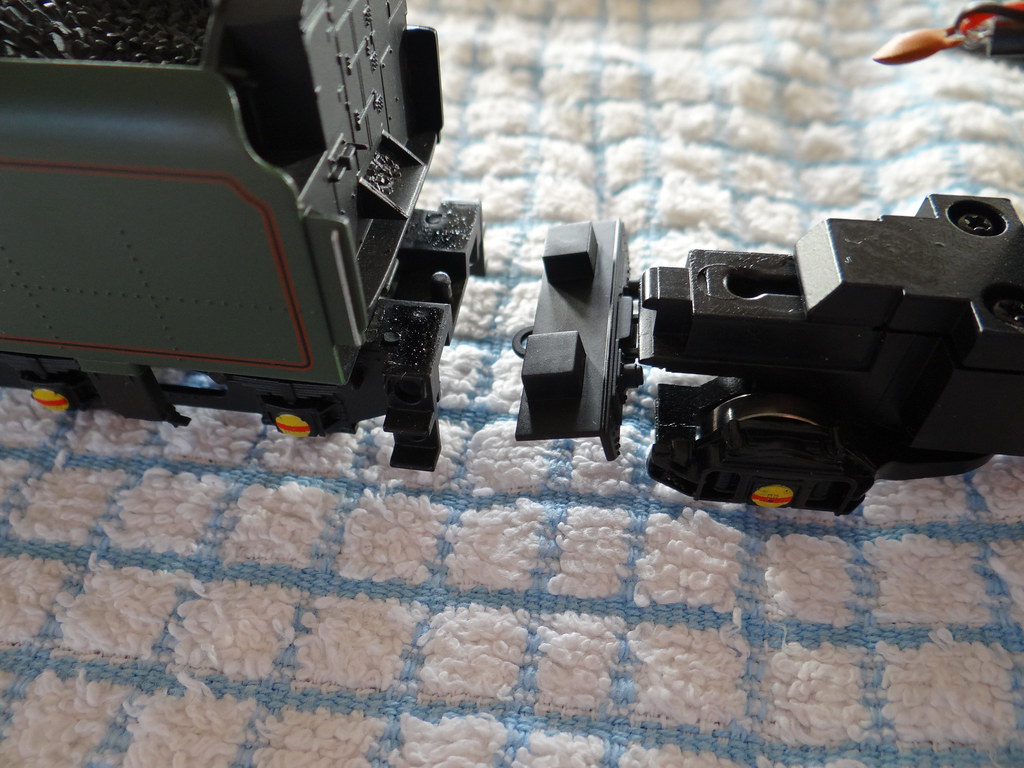
Tender to engine coupling unglued.
In the way of things this is minor and can easily be remedied.
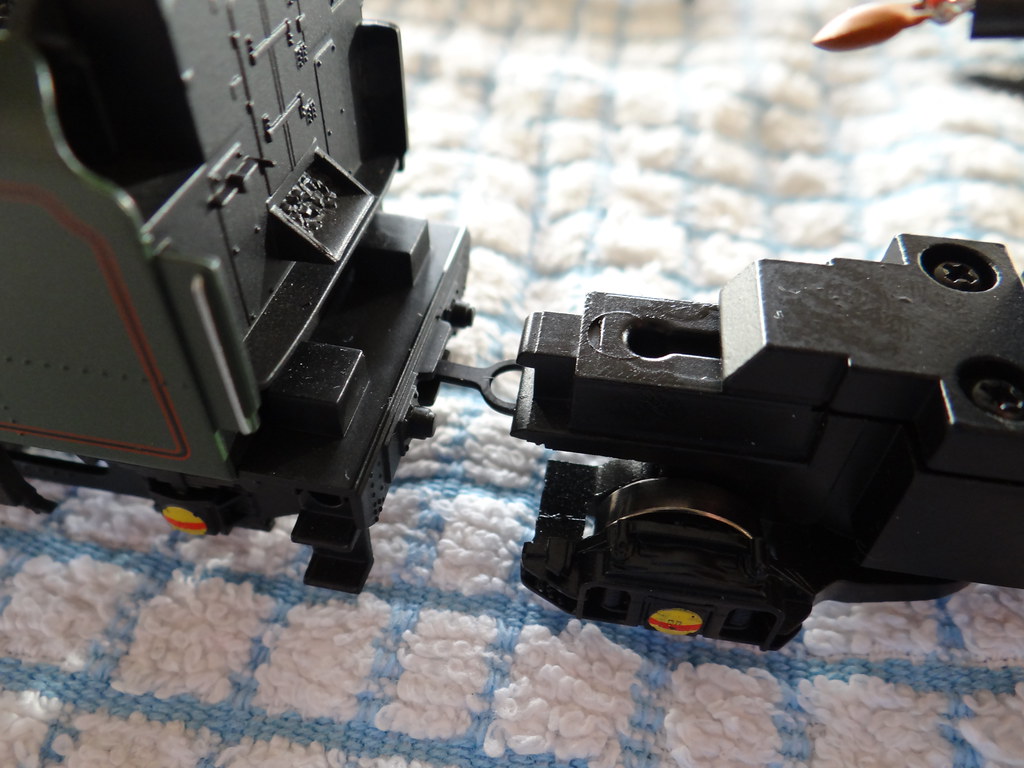
Engine to Tender Coupling as it should be
The front of the tender is easily re-glued (remember to reattach the metal engine to tender coupling first!)

Front section of tender / keeper plate
A more concerning issue was the poor running quality. The engine would hesitate and there was also a tendency for it to snake or waddle i.e. not run smoothly in a straight line. I would try ‘running it in’.
After some thirty minutes there was some improvement. The wheels turned smoothly so I thought – not a quartering problem. I would take the engine apart and look at the wheel sets.
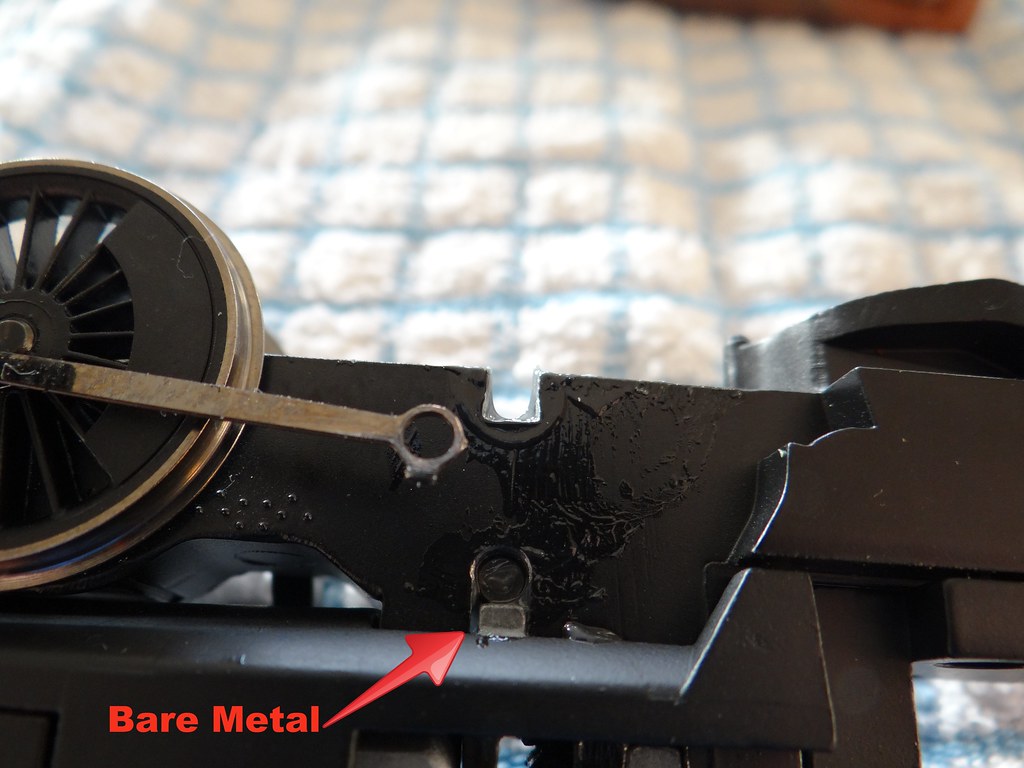
Wheel bearings?
First to note are the lack of brass wheel bearings – in fact I would say the wheel bearings seem rather crude.

One piece coupling rods
I was also surprised by the one piece coupling rods- even my Airfix Castles and Dapol County from the 1970s and 80s have articulated coupling rods.
I had little search on the internet and came across a comment about the Hornby Duke of Gloucester model which said something to the effect that “of course with no springing to the driving wheels the engine will show up all the irregularities in the track and may even stall”. I would agree - although with the big motor and flywheel – you may not always notice.
How to proceed? I took the bottom plate off the engine and removed the wheel sets.

Checking sideplay
I examined and adjusted the copper wiper contacts to ensure that the springing was all even. I inspected the individual wheel sets which all seemed to run true. I paid particular attention to the amount of sideplay available and ever so carefully manipulated the outside plastic (rotary) valve gear to ensure that the centre pair of driving wheels could move fully to either side. When reassembling the wheel sets I was also careful to ensure that the speedometer cable was seated properly on the end of its axle, ensuring that there was minimal restriction to sideplay.
Back together I would like to say the model is nearly very good.
.
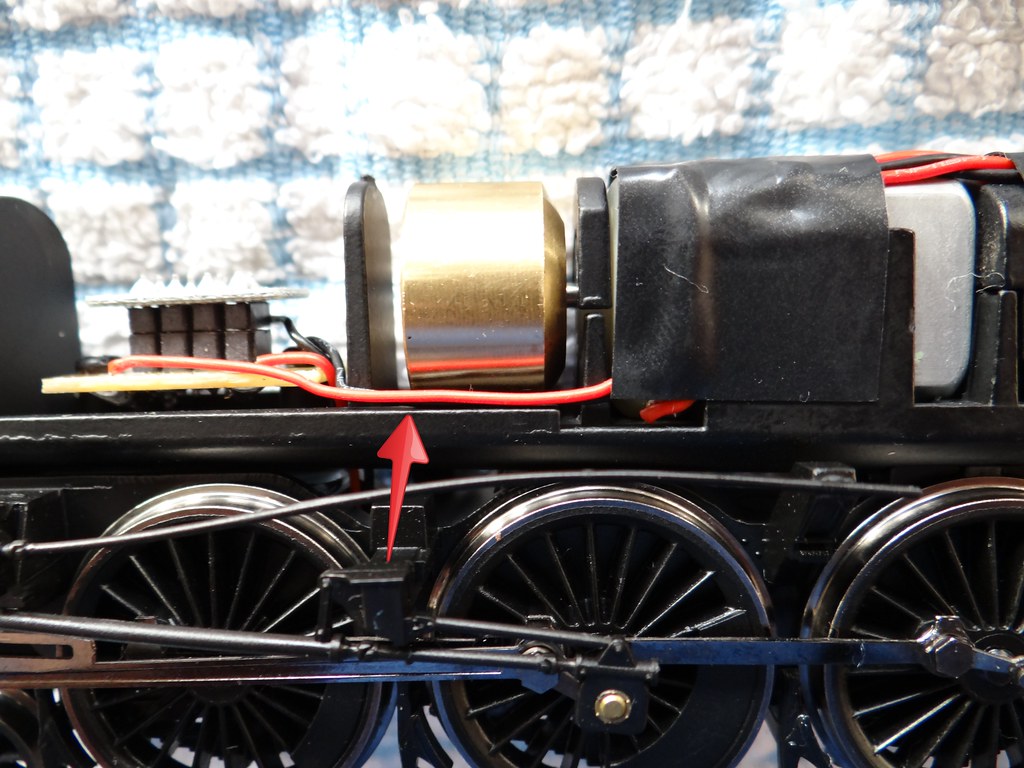
Wiring and the flywheel
Whilst ‘inside’ the model I noticed that the wiring from the DCC socket seemed to be touching the motor flywheel. For good measure I made sure that there was a visible gap between the wiring and the flywheel.
What about the appearance of the model?
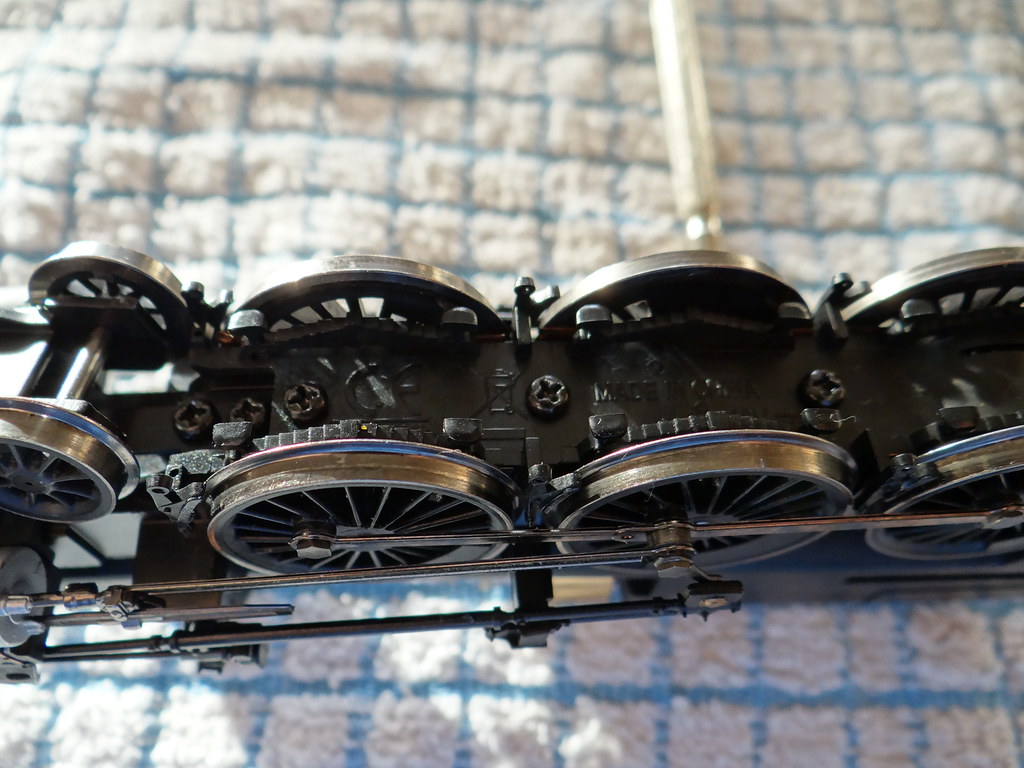
Still to attach the brake rodding
Hornby have supplied brake rodding but no sand pipes.
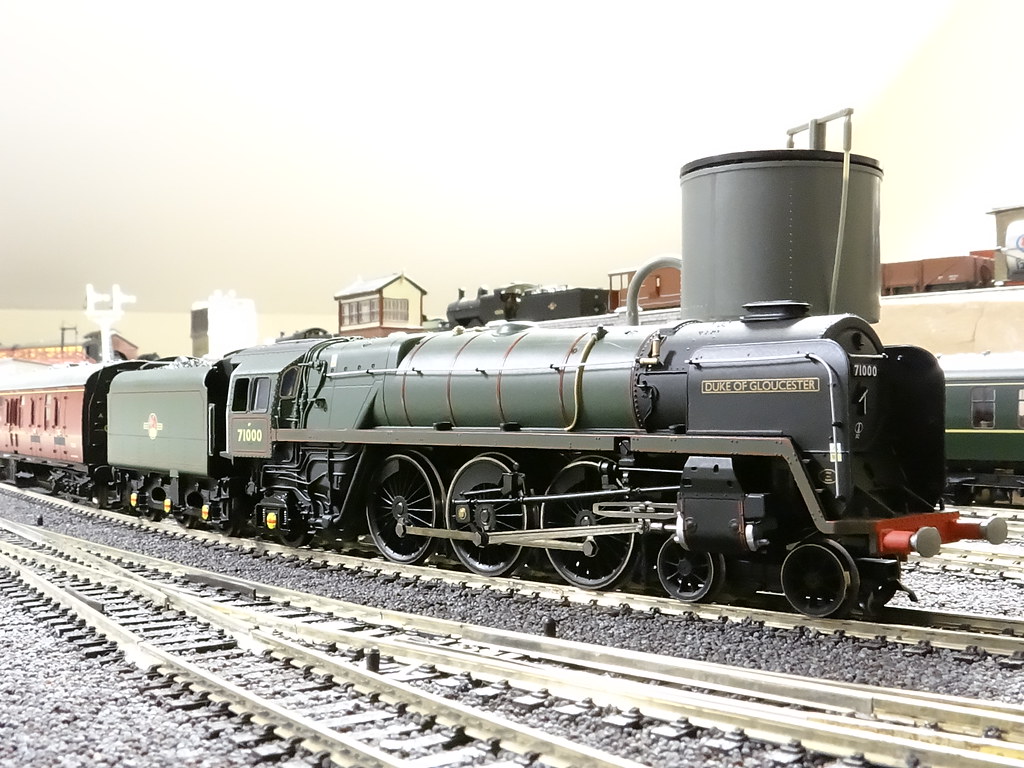
Still awaiting the attachment of the front steps
From a normal viewing distance I think the engine ‘looks the part’. The buffers are not sprung but they are realistic mouldings. The handrails on the engine are wire. Not so on the tender which has to ‘make do’ with silver painted mouldings.

A closer view
Looking at the model more closely you can see that the smokebox dart/handles are moulded integrally with the smoke box door. The same applies to the top lamp iron which is also part of the smoke box door moulding. Similarly the external pipework around the top of the firebox which is moulded separately on the latest Hornby Britannia Class engines is part of the boiler moulding on Duke of Gloucester.
I had thought that Duke of Gloucester would be at least as good as the Hornby Britannia – for example Apollo. I would say that it is not quite as good and Duke of Gloucester maybe rather like those chocolate bars, the price has been held but the quality or size of the product reduced?
How does it run? Well after a rather hesitant start my engine is now pretty good. Obviously the model needs running in. However with a completely rigid wheel base the engine will still pick out all the irregularities in your trackwork – and my trackwork has its fair share. So be warned.
Later tonight there should be a video
-
 4
4


.thumb.jpg.60c53fcbcaa34017b05b8919d1a9e6d2.jpg)

26 Comments
Recommended Comments
Create an account or sign in to comment
You need to be a member in order to leave a comment
Create an account
Sign up for a new account in our community. It's easy!
Register a new accountSign in
Already have an account? Sign in here.
Sign In Now